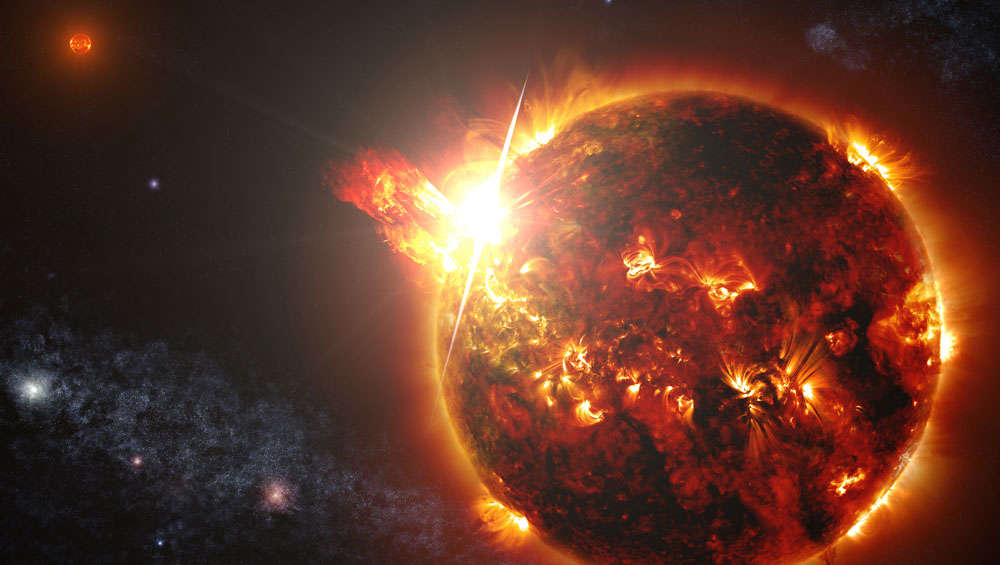Create a free profile to get unlimited access to exclusive videos, sweepstakes, and more!
Aurora Alert! Strong Coronal Mass Ejection Lights Up the Night Sky
The power of the Sun is astounding.

The 2013 science fiction adventure Europa Report follows the events of Europa One, the first crewed mission to one of Jupiter’s potentially habitable moons. During the long trip, the ship is hit by a powerful solar storm which disrupts communications and leads to the death of one of the crewmembers. Of course, that would only be the first death of the ill-fated mission, as you can see for yourself with the film currently streaming on Peacock.
Once on Europa, the crew faces an ever-worsening slate of threats, almost as if the solar storm was an unheeded omen, telling them to turn back before it was too late. If that’s the case in that fictional world, then perhaps we in the real world should pay heed, because the Earth just got struck by a coronal mass ejection (CME), triggering a strong geomagnetic storm in Earth’s atmosphere.
Coronal Mass Ejections and Geomagnetic Storms
Of course, it’s highly unlikely that the most recent CME is a harbinger of doom, given that CMEs happen all the time, especially as we near solar maximum of the Sun’s 11-year solar cycle. As the Sun’s activity ramps up, its powerful electromagnetic field gets all tangled up with itself. Every now and then, some of the electromagnetic threads get so tangled that they snap and launch themselves into space carrying charged plasma from the Sun’s surface with them. We call that a coronal mass ejection.
RELATED: Incredible Satellite Image of Aurora Over Canada with City Lights… And Something Else
While CMEs can pose a considerable threat to spacecraft (and any astronauts who happen to be aboard them), they can’t do too much to those of us here on the ground. If a CME happens to be pointed in our direction and hits the planet, all of that energy smashes into the atmosphere, where it comes into contact with our own electromagnetic field. There, it follows electric field lines from the poles toward the equator, charging atmospheric molecules in arcing ribbons of brilliantly colorful light.
One Saturday, September 16, astronomers witnessed large filament eruption on the Sun, with an associated CME. The National Oceanic and Atmospheric Administration’s (NOAA) Space Weather Prediction Center, issued a G2 (moderate) geomagnetic storm watch on Sunday, with an anticipated Earth arrival today, Tuesday, September 19.
The CME spent the next three days hurtling 93 million miles across space to reach us. As of early this morning, NOAA has confirmed moderate solar storm activity which briefly rose to G3 (strong) storm levels, pushing activity closer to the equator. There’s little risk to individuals on the ground, but a G3 storm can cause problems for orbiting spacecraft by charging their surfaces and causing additional atmospheric drag, potentially degrading orbits. There’s also some risk to electrical infrastructure, triggering NOAA to issue an alert to infrastructure operators.
If you’re in dark place with clear skies and you’re within the electromagnetic range of the storm (the nearer the poles, the better), there’s a good chance you could see the aurora streaking across the sky today.
Looking for a solar storm gone horribly wrong? Catch Europa Report, streaming now on Peacock!




























